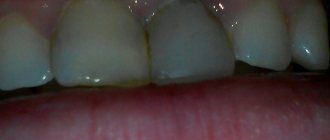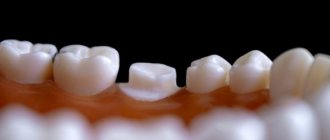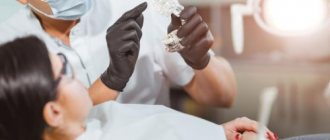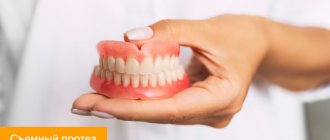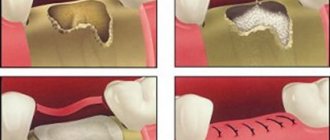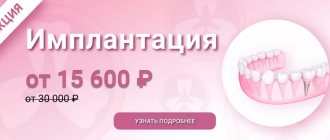Causes of dental injuries
Damage to baby teeth can be caused by any strong force applied to the jaw. For example, if a child was running and accidentally fell with his cheek on some object (chair, curb, step), this may well lead to a bruise or fracture of a tooth. Acute injuries also occur from blows to the face when children fight or play sports like boxing and karate.
Based on the nature of the acquisition, the reasons are divided into household, sports and travel. They are sudden and very painful. There are also chronic injuries that occur due to long-term bad habits. Biting nails, felt-tip pens, ballpoint pens, threads while sewing, or cutlery thins the enamel. Thin, fragile enamel and caries of baby teeth become the main factors of toothache in a child.
Symptoms of a tooth bruise
Immediately after an injury, an appointment with pediatric dentistry is required. Often parents bring their children after a week or a week and a half. This makes examination and treatment of lesions difficult. In the first hours after damage to the masticatory organ:
- Children feel pain.
- Pain increases when biting on a pathological unit.
- The gums swell, redden, and become dense.
- If, as a result of a bruise, a vascular bundle ruptures, blood appears, and pulpal hemorrhage may develop.
- The baby's condition worsens, he becomes restless and whiny.
- The temperature may rise. The child loses his appetite.
Only a doctor can help in such a situation. If a child’s baby tooth darkens after an impact, the blood vessels and pulp tissues could be damaged. In most cases, such processes are reversible. You should take your child to the doctor if there are signs of a bruise. Without treatment, the structure of the abnormal units will suffer, which will negatively impact dental health. The symptoms of severe damage are easy to recognize. In addition to painful sensations, pinkish enamel is clearly visible due to rupture of blood vessels. Brown spots appear after trauma to the periodontal tissues that hold the unit.
In dentistry, the following types are distinguished:
- Bruised tooth. It can be considered the mildest type of injury, which is provoked by blows, attempts to bite through a hard object or “taste” it, which is especially typical for children 1-3 years old.
- Tooth dislocation. Such an injury means that the tooth has moved from its usual place. Typically, this type of injury requires significant force, so it does not occur as often as bruises. There are cases of complete dislocation, when the entire tooth falls out of the socket. Modern pediatric dentistry can save even a lost tooth if there are favorable conditions for this, and parents brought their child in immediately after receiving an injury.
- Tooth fracture. Fractures are immediately visible - these are visible chippings of a corner, piece or most of a baby tooth. Most children break their front teeth; the most popular causes of such damage include fights.
- Fracture of the root or crown of a tooth. They are considered rarer species, because in normal everyday life and sports conditions it is extremely difficult to get such a deep fracture. Regardless of whether the child has acquired a simple tooth bruise or suffered a fracture, in any case it must be shown to a specialist so as not to endanger the health of the young body.
What actions should be taken if a child suffers an injury to a baby tooth?
Let's start with the fact that injury is always pain. It would seem that baby teeth will change anyway... Why pay attention to them? Believe me, it is necessary and necessary to pay attention. If you do not contact pediatric dentistry for treatment of baby teeth, then in the future there is a risk that the infection that has affected the baby tooth will damage the germ of the permanent tooth. If you do not pay attention to the injury of a baby tooth, you may not see the damage in the bud of a permanent one.
Children, by nature, have very mobile and active behavior and lifestyle. This is wonderful! But sometimes they do not hear or perceive the warnings of adults aimed at ensuring safety. This leads to various injuries, often associated with teeth. When the question concerns the injury of a baby tooth, you can often treat the moment negligently with the expectation that it is still temporary and would have fallen out anyway.
Don't leave the situation to chance! Even if the injury affected a baby tooth, which was about to fall out anyway. The fact is that the force of a blow is sometimes impossible to estimate. Under the milk tooth is the germ of a permanent one. It is often impossible to conduct even a visual inspection on your own, not to mention what kind of trauma was caused to the gum and, possibly, the germ of a permanent tooth.
In a situation where there is an injury to a child’s tooth(s):
- Stay calm (although this is sometimes difficult in practice). If you are nervous, children will absolutely sense the mood, especially of loved ones.
- Do not scold your child under any circumstances (“I told you, I warned you!”) Do not forget that he is already in pain and scared. All educational moments and lessons from the situation can be raised later, after the pain has calmed down.
- Show maximum care and tenderness, reassure as much as possible.
- It is imperative to visit a dentist for an examination and consultation and conduct a diagnosis of dental treatment. When you call your clinic or the nearest one (at your discretion), DO NOT ask if a pediatrician is working today, DO NOT say that you need a pediatric dentist. It must be said directly that the child has suffered a tooth injury and needs an urgent examination by a doctor. In every decent clinic they should offer you to come right away, regardless of the doctor’s appointment, and they may warn you that you will have to wait. Or, at a minimum, they are obliged to offer: “wait, I’ll clarify what we can do for you, leave your contact phone number and we will call you back in the next 5-20 minutes.” In this case, they will offer to drive to the clinic or direct you where you can go directly at this moment. If they immediately answer you: “We’re all busy, we can’t help you,” don’t ever go to this clinic.
What the doctor will do at the appointment:
- Visually examine how serious or minor the injury is.
- Be sure to take a photo in the area of the injured tooth(s) to understand whether the permanent tooth(s) are damaged or not.
- He will remove the injured tooth so that it does not cause pain and inconvenience. If the blow was not severe and the tooth was only chipped, if recovery is possible, the pediatric dentist will cure it.
- If necessary, provide recommendations for care in the area of injury.
- As planned, he will make an appointment for the child to be examined by a pediatric dentist if it was not possible to get to him on the day of the injury.
Any experienced dentist will be able to visually and with the help of X-ray diagnostics assess how serious the injury is or whether everything was just a minor fright. Don't leave injuries unattended!
Trauma to a child’s front tooth – what should be done?
The mobility of children and their carelessness leads to the fact that a child, if he hits, can damage his tooth. In this case, it should definitely be shown to a pediatric dentist. Depending on the nature of the injury, the specialist will determine whether tooth extraction will be necessary in dental surgery, or whether it is possible to save the damaged tooth. Although the removal of a baby tooth is not perceived as a tragedy by many parents, its early absence can negatively affect the position and condition of permanent teeth.
In order to find out the nature of the damage, clinical studies are carried out, as well as a number of additional ones. Conducting a clinical examination, the doctor determines the level of tooth fracture, finds out how much it is displaced, how damaged the surrounding tissues are, whether there is a violation of occlusion or staining of the tooth, etc.
Instrumental methods that make it possible to clarify the nature of the injury include: electroodontometric measurements, transillumination method, and dental radiography.
Palpation allows you to determine whether the tooth or any part of it is mobile. Is there swelling or bulging that occurs when the alveolar process is broken or the tooth itself is displaced. Mobility of an injured tooth has three degrees.
First degree: mobility usually does not require splinting.
Second degree: mobility often requires securing (stabilizing) the injured tooth with splints.
Third degree: tooth mobility indicates the need for urgent splinting, and sometimes tooth replantation.
In all three cases, treatment is performed under freezing anesthesia.
If only one tooth is broken, it is necessary to percussion all teeth located nearby, as they can also be injured. Vertical percussion reveals the degree of damage to the periapical tissues, while horizontal percussion diagnoses pulpal edema, or hemorrhage into the pulp, and should be performed with extreme caution.
And no matter how trivial a tooth injury may seem, an x-ray must be taken. An x-ray provides all the information the doctor needs about the condition of the injured tooth. It allows us to identify the direction of the dislocation, how well the equine system is formed, whether there is an impaction of the tooth, and whether periapical changes have occurred. Using an X-ray of the tooth, the doctor sees the condition of the entire periodontium, the width of the pulp chamber, the growth zone, and determines whether there are foreign bodies.
A timely x-ray, its correct analysis, successful and painless treatment will allow your child to save his tooth. And prevention and deep fluoridation of teeth will make them healthy and resistant to caries.
IF A CHILD HAS KNOCKED OUT A PERMANENT TOOTH
- The tooth must be found, lifted from the ground, rinsed under cool running water for 10 seconds, holding it by the crown - do not rub or touch the root.
- Insert into place as soon as possible. Don’t be embarrassed that if it protrudes a little, the dentist will correct it as needed. Bite on a handkerchief for better fixation of the tooth.
- If a child or parent is afraid to put the tooth in its place themselves, place the tooth in cow's milk, saline (BUT NOT WATER!!!!) (they also recommend placing the tooth in the mouth of an older child, but how realistic is this - it seems to me unrealistic) and very quickly go to the dentist for a replantation procedure. The child needs to hold the tooth in its natural position with a finger (if there is no fixation by biting, use a handkerchief), and the father should try to drive quickly and carefully, without jerking or braking.
The statistics for permanent teeth are as follows:
If the tooth is returned to its place within 30 minutes, it will take root in 90 percent of cases; if replantation is delayed for up to 2 hours, it will fail in 90 percent of cases. It is clear that during the first 30 minutes, first aid to the injured child will be provided by his parents. According to Polish researchers, the percentage of medical workers willing to replant a tooth at the site of injury is only 7 percent; the rest prefer to call parents to take the child to the dentist. And this is a waste of time, reducing the chance of engraftment.
Therefore, forewarned means forearmed. Tell your friends.
The child has a dislocated tooth, a severe bruise, and mobility.
In this case, the baby does not allow you to touch or put pressure on the tooth. The damaged unit makes it difficult to close the mouth. The pain is acute and does not go away without anesthetics.
Take your child to the clinic without delay. The dentist will take an x-ray to rule out damage to the roots and pulp. If the tooth remains in the socket, he will fix the position and apply a splint. When the tooth is completely knocked out, it will perform replantation (install it back into the hole). The pulp dies. But the implantation of a natural tooth is still better than its complete loss and replacement with an artificial one.
The root of a permanent tooth is broken.
Mostly the child complains of pain when biting or pressing on a tooth. Mobility and swelling of the gums appear. The fracture site is clearly visible on x-ray.
Therapy requires precise determination of the location of the fracture (upper, middle part, longitudinal fracture) and the presence of inflammation. Treatment methods depend on these parameters. As a last resort, we recommend tooth extraction. Before the procedure, the doctor, together with the parents, will decide how the empty area will be restored. A child's lost tooth can be replaced with a removable denture.
Prices for children's fillings and dental treatment
Features of dental restoration in children
Children's restoration is temporary, designed to last a couple of years until the bite changes. Since nothing should interfere with the proper growth and formation of permanent teeth.
For this reason, fixed dentures, crowns and veneers are not installed in children. They are limited to removable structures, they are easy to replace and adjust to the growing jaw.
At Idealdent, to restore a child’s tooth we use:
Removable prosthetics – plate dentures, butterfly dentures.
Young children are curious about dentures and quickly get used to them. They do not cause fear or psychological discomfort. Temporary orthopedic structures must be replaced every 8-10 months up to 10 years, and every year or two up to 18 years.
Removable dentures are good because:
- evenly distribute the load on the jaw;
- stimulate the development of bone tissue in toothless areas;
- maintain articulatory balance and smile aesthetics.
- Orthodontic treatment – preventive removable appliances with springs, sliding screws, bite pads and other elements.
Applicable at an early age. From 11-14 years old, braces are installed.
The braces system will allow you to correctly move your teeth and close the void. The duration of treatment depends on the clinical case. Usually, by the age of 16, jaw growth stops, braces remain, but the tactics for correcting the bite change.
Dental implantation in children.
Possible only after the final formation of the jaws by the age of 16-18.
Treatment
- For mild bruises, treatment consists of resting the tooth for 3-4 weeks by reducing the load during chewing: the menu includes soft and semi-liquid foods, and a blender is used to grind hard foods.
- To ensure rest for baby teeth, temporary bite separation with the help of mouth guards is used; if a permanent tooth is bruised, splinting is performed. The splint allows you to immobilize an injured tooth and redistribute the load during chewing onto healthy teeth.
- If the pulp dies due to an impact, the tooth cavity is opened and the pulp is removed, after which the root canals are filled and a permanent filling is installed. If the crown of a tooth darkens, it can be whitened.
- When a baby tooth is bruised, grinding of the cutting edge of the crown of the antagonist tooth is used to prevent tooth contact and reduce pain. This method is not used for permanent teeth.
- To relieve pain, it is recommended to take an anesthetic tablet (ibuprofen, ketorolac, nimesulide) and apply an anesthetic gel (Dentol, Kamistad) to the gums around the tooth.
- When swelling of the soft tissues of the face accompanies a bruise, cold compresses are applied: a plastic bottle with cold water (not lower than +4°C) is wrapped in a cloth and held on the area of swelling for 15-20 minutes.
- A course of magnetic laser therapy is carried out - a combined effect on injured tissue of a magnetic field and low-intensity laser radiation. The method helps improve healing processes, relieves swelling and inflammation. The course consists of 10 daily procedures lasting 5 minutes.
- UHF therapy is indicated to accelerate tissue regeneration.
Diagnostics
- Patients with a tooth injury are referred for x-ray diagnostics to exclude a root fracture. To obtain information using targeted radiography, it is sometimes necessary to take several images from different angles, which is undesirable for the patient.
The most accurate information about the condition of the roots is provided by computed tomography - an x-ray examination method that allows you to obtain a three-dimensional image of the tooth. The examination results are displayed on the computer screen and must be transferred to a CD or USB flash drive.
An X-ray examination of a tooth bruise reveals a slight widening of the periodontal fissure.
- The condition of the pulp after injury is monitored using EDI - electroodontodiagnosis. The method consists in determining the reaction of the nerve endings of the pulp to the influence of electric current. The level of electrical excitability of the pulp depends not only on its condition, but also on the degree of formation of the tooth root.
The examination is carried out 2 or 3 days after the injury, since on the first day the pulpal response may be reduced due to traumatic neuritis. Be sure to perform an electrical test on adjacent healthy teeth to compare sensitivity levels. 3-4 weeks after the injury, EDI is repeated.
- Another method of examination for a tooth bruise is transillumination, the essence of which is to pass a beam of cold light through the tooth and evaluate shadow formation. If there are cracks in the enamel after an impact, they will be clearly visible in the stream of light; The technique also helps to detect pulpitis. In modern clinics, all dental units are equipped with light guides for transillumination examination.
